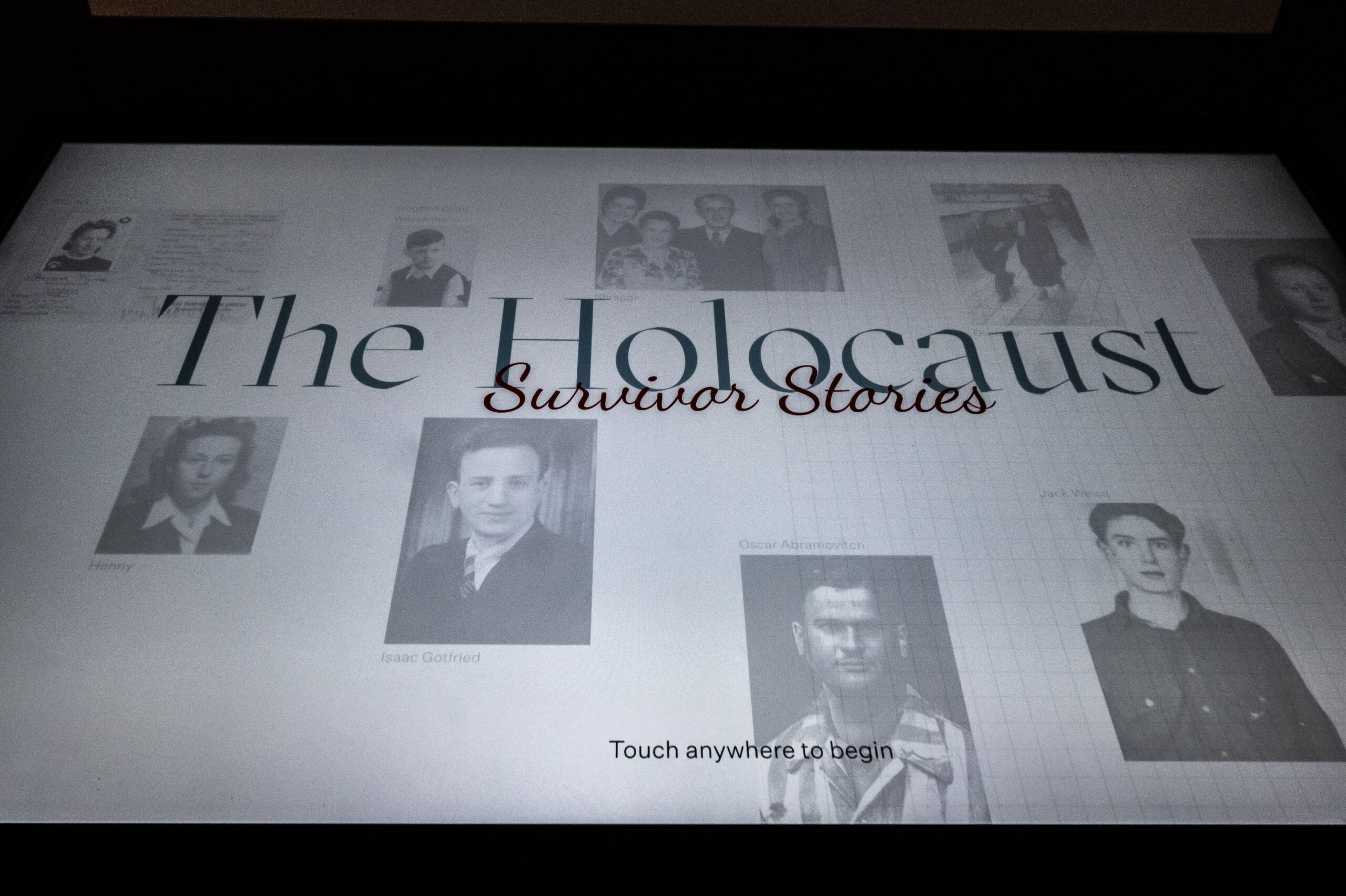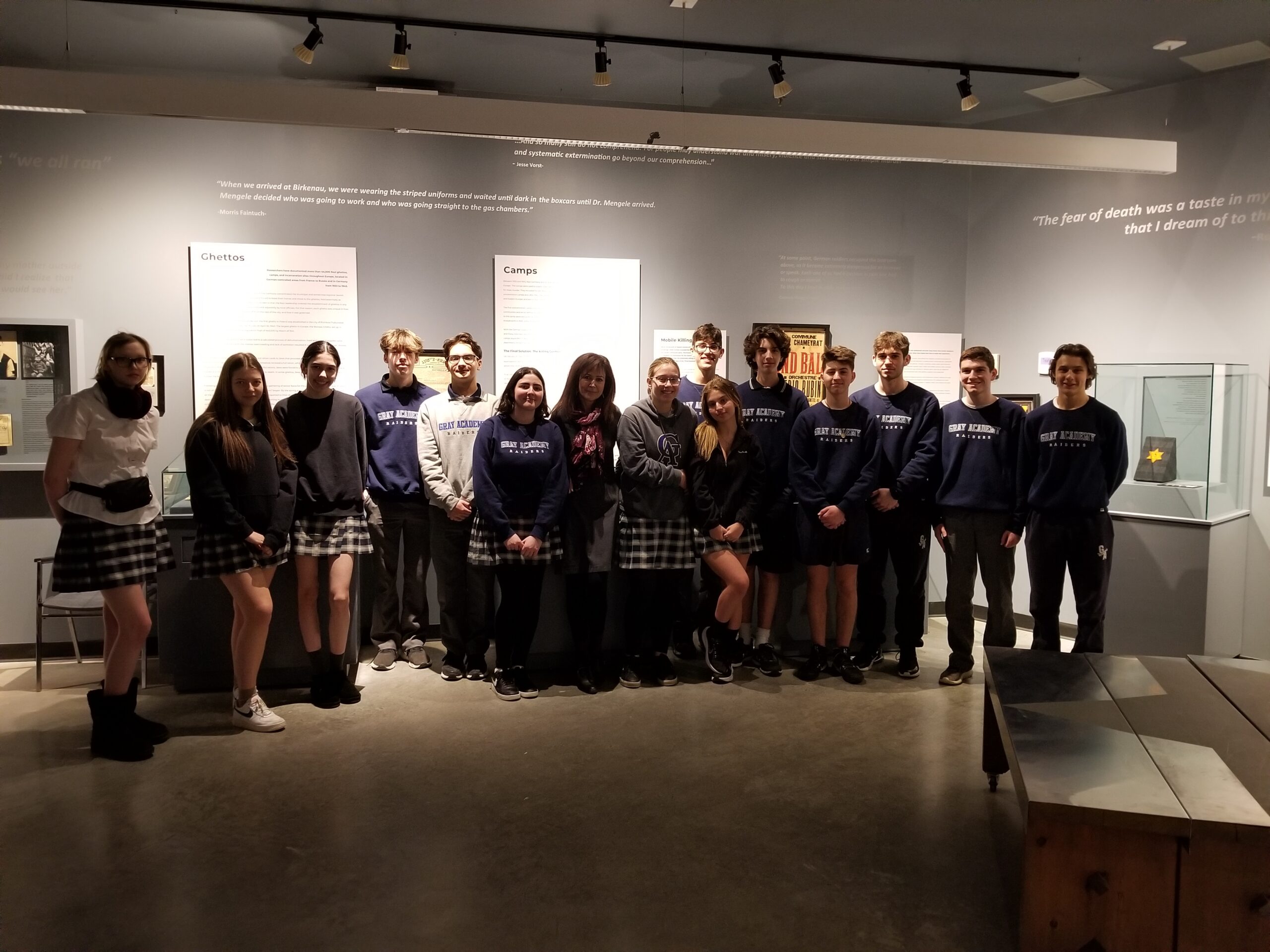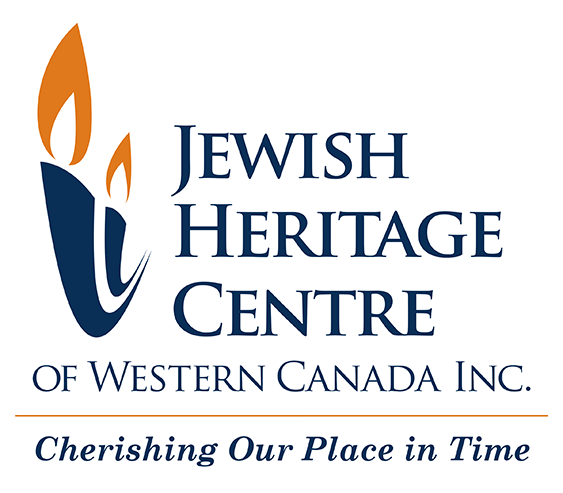School Programs:
Presentations in the Freeman Family Holocaust Education Centre
he Jewish Heritage Centre is pleased to let you know that with the reopening of the Freeman Family Holocaust Education Centre, we welcome middle school and high school students to visit us once again. We offer presentations on the Holocaust and on historical and contemporary antisemitism, including antisemitism in Canada. Each presentation is based on the latest best practices in education (as recommended by the 35 countries of the Holocaust Remembrance Alliance).
The goals of the presentations are as follows:
- To develop knowledge of the Holocaust, racism and antisemitism ensuring accuracy in individual understanding and knowledge and raising awareness about the possible consequences of racism and antisemitism;
- To create engaging teaching environments for learning about the Holocaust, racism and antisemitism, including Canada’s checkered history– past and present;
- To promote critical and reflective thinking about the Holocaust, racism, and antisemitism;
- To contribute to Human Rights and genocide prevention education.

OUR INTERACTIVE TABLE
The one and a half to two-hour presentations consist of a presentation by an expert and is followed by a tour of our space and introduction to our new technology additions.
Our presentations are designed to enrich the curriculum and to offer students opportunities and materials for reflection, discussion and further research into a range of issues. Our intention is to raise awareness and understanding of the history of the Holocaust as a universal human rights issue. We address the fact that society continues to witness genocide due to continuing racism and hatred and that we must all be vigilant in opposing racism, antisemitism and other forms of bigotry.
The Freeman Family Foundation Holocaust Education Centre is located at the Asper Jewish Community Campus at 123 Doncaster Street. The window at the entrance to the museum depicts the diverse lives of our survivors and their families before the Holocaust with exquisite artefacts and photos. Visitors enter by walking through a replica of the boxcar doors which sealed the fate of so many of those transported to the death camps during the Holocaust. The museum is unique in that all the artefacts and photos belonged to Manitoba Holocaust survivors. Text panels further outline the history of the Holocaust.
With the passage of time, there have been advances in best practices in Holocaust museology, education, and research findings. Technology has become an essential element of Holocaust museums today, attracting the interest of young people and also allowing for the integration of a large collection of materials. With that in mind, we have developed an interactive table, which features stories and photographs outlining the lives of local survivors before, during, and after the Holocaust. An overview of the Holocaust includes maps and photos to further illustrate the history as well as the individual stories. We are also paying tribute to the contributions of our survivors to our community.
In addition to the interactive table, a computer kiosk connects visitors to the USC Shoah Foundation’s Visual History Archive (VHA) and its more than 55,000 video testimonies and a list of 1.9 million searchable names. We are the only full access site to the VHA between Toronto and Calgary. A third electronic addition to our museum is the projection of the names of all survivors who settled in Winnipeg at any time – some 1050 men and women.
There is no charge for these presentations; however, donations would be gratefully appreciated as they help us pay for our overhead costs and ensure that we are able to continue our programming. Tax receipts are available.
To book a visit, contact us: [email protected]

Students from the Gray Academy of Education visit the Holocaust Education Centre.
